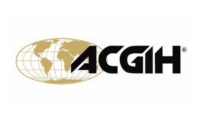While HazCom 2.0 is expected to yield numerous benefits — including improved worker safety and enhanced competitiveness for companies who do business on an international level — it is also inspiring numerous questions among those responsible for and affected by its implementation. Here are answers to some of the most frequently asked questions:
Q. What is the Globally Harmonized System (GHS)?
A.The GHS provides a single set of harmonized criteria for classifying chemicals according to their health and physical hazards and specifies hazard communication elements for labeling and safety data sheets.
Q. Why change the HCS?
A. The revisions are expected to improve worker safety and health through more effective communications about chemical hazards.
Q. What are the major changes?
- Hazard classifications will provide specific criteria for classification of health and physical hazards, as well as classification of mixtures.
- Labels will contain harmonized signal words, pictograms and a hazard statement for each hazard class and category. Precautionary statements must also be provided.
- Safety Data Sheets will now have a specified 16-section format.1
Q. What didn’t change?
A. The parts of the HCS that did not relate to the GHS (such as the basic framework, scope and exemptions) remained largely unchanged. Some terminology has been modified to align the HCS with the GHS. Hazard determination is now hazard classification. Material safety data sheet will change to safety data sheet (SDS).
Q. What are the key dates?
- 12/1/2013: Employees must be trained on the new label elements and SDS format.
- 6/1/2015: Compliance with all the modified provisions of the final rule, except;
- 12/1/2015: Containers of chemicals cannot be shipped unless they have a GHS label.
- 6/1/2016: Employers must update alternative workplace labeling and hazard communication program as necessary and provide additional employee training for newly identified physical or health hazards.
During the transition period, chemical manufacturers, importers, distributors and employers may comply with either 29 CFR 1910.1200 (the final standard), the current standard or both.2
Q. What are the employee training requirements?
A. Training must take place at the time employees are assigned to work with a hazardous chemical, and has to go beyond simply giving employees the data sheets to read. Employees must be given a thorough understanding of the hazards of the chemicals in their work area.2
Furthermore, the training must be comprehensible. If the employees receive job instructions in a language other than English, the training and information to be conveyed under the HCS will also need to be conducted in that language.2
Q. Why train employees before the compliance date?
A. OSHA believes that American workplaces may begin to receive labels and SDSs that are consistent with the GHS shortly after publication.1
Q. How will labels change?
A. The label preparer must provide the identity of the chemical and the appropriate hazard warnings. Once the hazard classification is completed, the standard specifies what information is to be provided for each hazard class and category. Labels must have the following elements:
- A pictogram and other graphic elements that convey specific information about the hazards of a chemical. There are nine pictograms under the GHS, but only eight are required under the HCS.
- The word “danger” will be used for severe hazards, “warning” for less severe hazards.
- A Hazard Statement will describe the nature and, where appropriate, the degree of the hazards.
- A Precautionary Statement will recommend ways to minimize or prevent adverse effects resulting from exposure to a hazardous chemical, or improper storage or handling of a hazardous chemical.1
Q. How will Safety Data Sheet (SDS) change?
A. The information required will remain essentially the same as that in the current standard, but it must be presented using consistent headings in a specified sequence. The format of the 16-section SDS will include the following sections: Identification; Hazard/s identification; Composition/information on ingredients; First-Aid measures; Accidental release measures; Handling and storage; Exposure controls/personal protection; Physical and chemical properties; Stability and reactivity; Toxicological information; Ecological information; Disposal considerations; Transport information; Regulatory information; Other information (including date of preparation or last revision).1
Q. Will TLVs be required on SDS?
A.OSHA is retaining the requirement to include the American Conference of Governmental Industrial Hygienists (ACGIH) Threshold Limit Values (TLVs) on the safety data sheet (SDS) in the revised Standard. OSHA permissible exposure limits (PELs) and any other exposure limit used or recommended by the chemical manufacturer, importer, or employer preparing the safety data sheet are also required.1
Q. What about hazards not addressed by the GHS?
A.Those will be covered by a category called, “Hazards Not Otherwise Classified (HNOC).” HNOC hazards will not be required to be disclosed on the label but must be disclosed in section 2 of the Safety Data Sheet (SDS). Chemical manufacturers and importers are expected to assess these hazards when they are evaluating physical and health hazards.1
Q. How many businesses and workers will be affected?
A. OSHA estimates that more than 5 million workplaces and 43 million employees in the U.S. will be affected. Included in these figures are an estimated 90,000 establishments that create hazardous chemicals and employ almost 3 million workers.1
Q. How much will it cost industry to comply?
A. The estimated costs to industry will be $201 million a year on an annualized basis.1
Q. What are the expected benefits?
- The prevention of 43 fatalities and 585 injuries and illnesses (amounting to a savings of $250 million a year).
- An estimated $475.2 in productivity improvements, $32.2 million during periodic updating of SDSs and labels, and $285.3 million from simplified hazard communication training.
- Productivity benefits resulting from the need for fewer SDSs in future years, streamlined training for employees and benefits for firms engaging in international trade.1
Q. The United Nations revises the GHS every two years. How will OSHA handle changes?
A. It is expected that the GHS will be a living document and is expected to remain up-to-date and relevant; therefore further changes may be adopted on a two-year cycle. Presently most of the recent updates have been clarification of text. However, OSHA anticipates that future updates of the HCS may be necessary and can be done through various rulemaking options, including:
- Technical updates for minor terminology changes,
- Direct Final Rules for text clarification, and
- Notice and Comment rulemaking for more substantive or controversial updates such as additional criteria or changes in health or safety hazard classes or categories.
Q. Where do I get more information?
- At OSHA’s Hazard Communication web page, you’ll find a wealth of information including a fact sheet, educational resources like QuickCards on safety data sheets and sample labels and pictograms.
- The United Nations has published a detailed guide on the GHS, which is posted in a user-friendly format on OSHA’s website.
- For a look at where GHS stands internationally, The United Nations Economic Commission for Europe (UNECE) maintains a document summarizing the status of GHS implementation in 67 countries.
- Bloomberg, Bureau of National Affairs: OSHA Releases Final Rule Aligning HCS with GHS
- Baker Hostetler LLP: OSHA Aligns Its HCS with GHS
- American Society of Safety Engineers: ASSE Suggests the Earlier the Better for Companies to Get Started with GHS Compliance
References:







